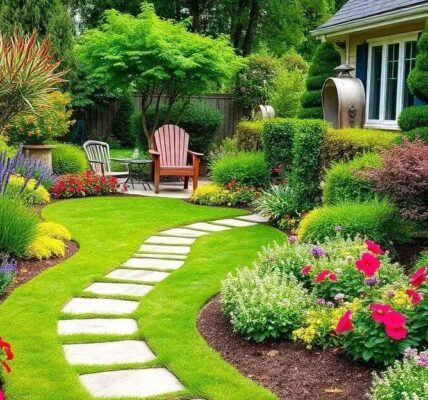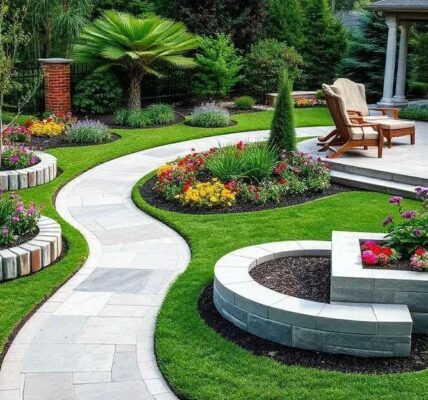Desert landscaping is not just about surviving in harsh climates; it’s about thriving!
With the right approach, you can create a stunning outdoor space that reflects the beauty of the desert while conserving resources.
This article will guide you through essential tips and techniques to transform your yard into a vibrant desert oasis.
From selecting drought-resistant plants to effective water conservation methods, you’ll discover how to make your desert landscape both beautiful and sustainable.
Understanding Desert Climate and Soil
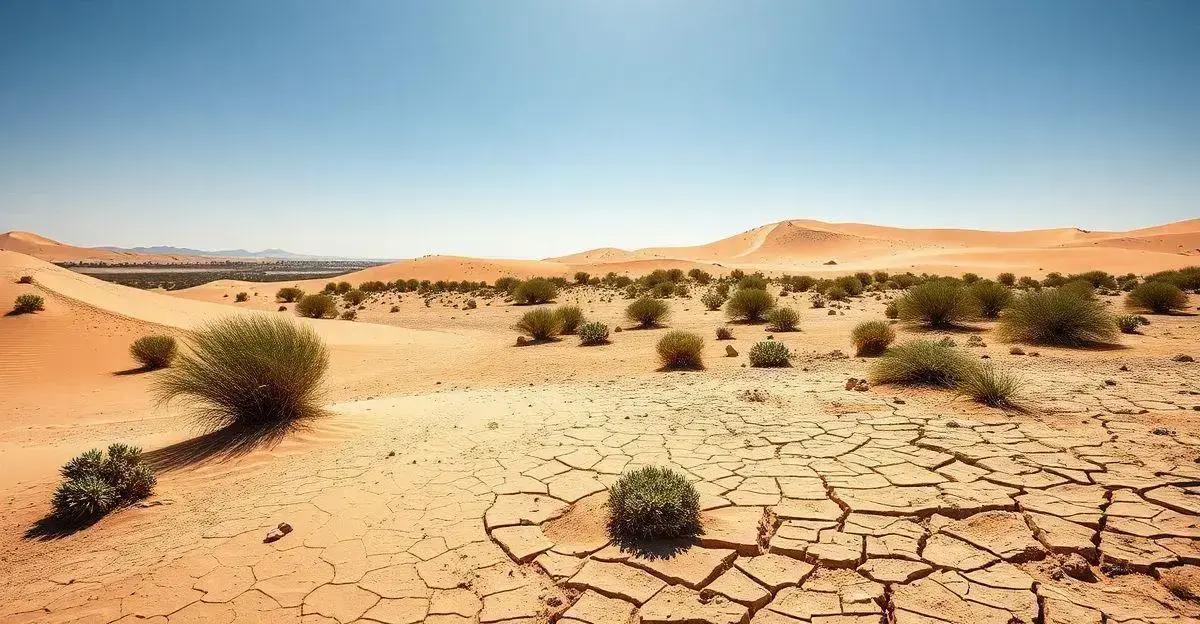
When embarking on desert landscaping, understanding the unique climate and soil conditions is crucial. Deserts are characterized by their arid climate, which means they experience low rainfall, high temperatures during the day, and cooler nights. This fluctuation can significantly impact plant selection and garden design.
The soil in desert regions often consists of sandy or rocky materials, which can drain quickly. This drainage is great for preventing waterlogging but poses a challenge for moisture retention. To combat this, consider amending your soil with organic matter, such as compost, which can help retain moisture and provide essential nutrients.
Additionally, it’s important to recognize that desert soils may have varying pH levels, which can affect plant growth. Conducting a soil test can provide insights into nutrient deficiencies and help you make informed decisions about soil amendments and plant choices.
Understanding these factors will not only help you choose the right plants but also ensure that your landscape is sustainable and thrives in the challenging desert environment.
Choosing the Right Plants for Desert Landscaping
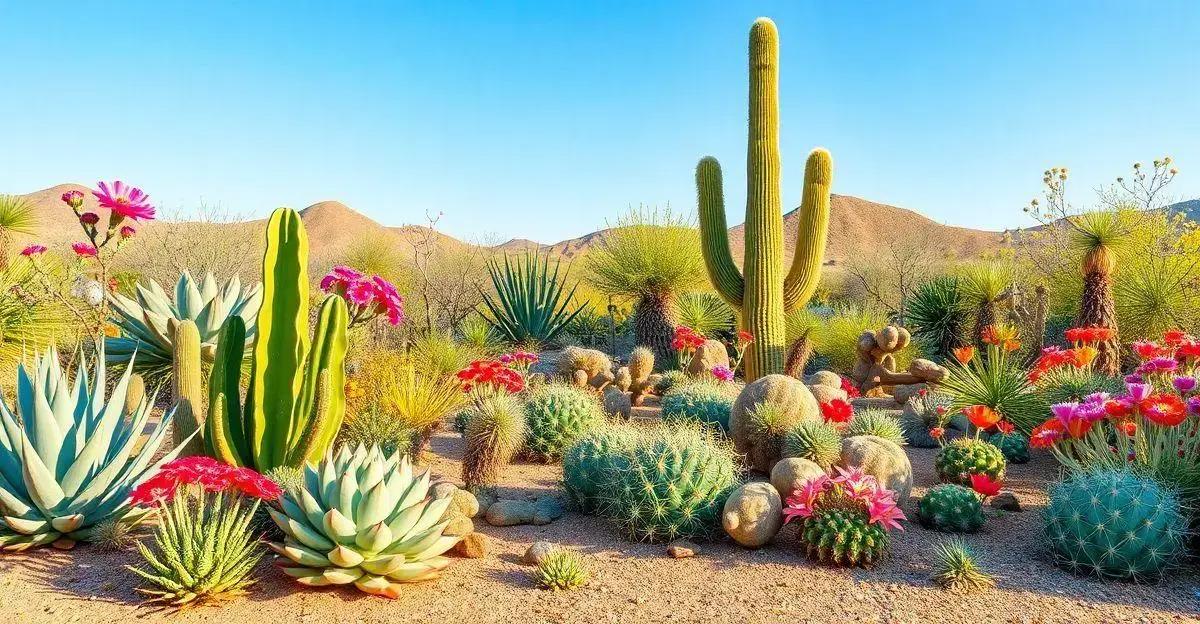
Choosing the right plants for desert landscaping is essential for creating a thriving garden that can withstand harsh conditions. Drought-resistant plants are your best friends in this environment. Native plants, in particular, are adapted to local climate conditions and require less water and maintenance.
Some popular options include:
- Saguaro Cactus: This iconic cactus can grow to be quite large and adds a dramatic touch to any landscape.
- Agave: Known for its striking rosettes, agave is a hardy succulent that thrives in dry conditions.
- Desert Willow: This beautiful tree produces stunning flowers and provides shade, making it a great choice for larger spaces.
- Red Yucca: With its tall flower spikes, red yucca attracts hummingbirds and adds color to your garden.
- Lavender: Not only does lavender thrive in dry climates, but it also offers delightful fragrance and attracts pollinators.
When selecting plants, consider their specific water needs, growth habits, and potential size. Grouping plants with similar water requirements can help you manage irrigation more effectively. Additionally, incorporating a mix of textures and colors can create a visually appealing landscape that reflects the beauty of the desert.
Lastly, don’t forget about the importance of seasonal interest. Choose plants that bloom at different times of the year to keep your garden vibrant and engaging throughout the seasons.
Water Conservation Techniques in Desert Gardens
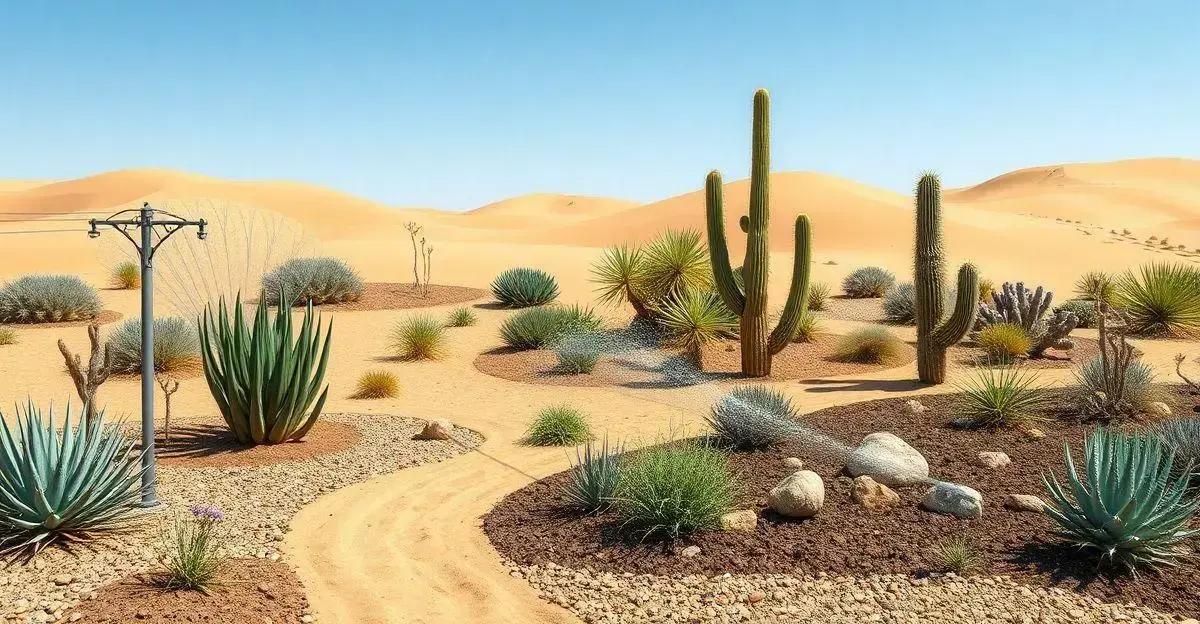
Water conservation is a top priority when it comes to desert landscaping. With limited rainfall and high evaporation rates, implementing effective water-saving techniques can make a significant difference in the sustainability of your garden.
Here are some practical strategies to consider:
1. Drip Irrigation: This method delivers water directly to the roots of plants, minimizing waste and evaporation. Drip systems are highly efficient and can be easily automated to ensure your plants receive the right amount of moisture.
2. Mulching: Applying a layer of organic mulch around your plants helps retain soil moisture, suppress weeds, and regulate soil temperature. Materials like wood chips, straw, or gravel work well in desert gardens.
3. Rainwater Harvesting: Collecting rainwater from your roof can provide a free source of irrigation. Install barrels or cisterns to store rainwater and use it to water your garden during dry spells.
4. Soil Amendments: Improving your soil with organic matter, such as compost, can enhance its ability to retain moisture. Healthy soil holds water better, making it more accessible to plants.
5. Plant Selection: Choose drought-tolerant plants that require less water. Native plants are particularly well-suited for desert gardens, as they are adapted to thrive in arid conditions.
By integrating these water conservation techniques into your desert garden, you can create a beautiful landscape that uses resources wisely and thrives even in the driest conditions. Remember, every drop counts!
Incorporating Hardscaping Elements

Incorporating hardscaping elements into your desert landscaping not only enhances the visual appeal of your garden but also plays a crucial role in water conservation and maintenance. Hardscaping refers to the non-plant elements of your landscape, such as pathways, walls, and patios. Here’s how to effectively integrate hardscaping into your desert garden:
1. Pathways: Creating pathways with materials like gravel, stone, or pavers helps define spaces and provides easy access throughout your garden. These materials also allow rainwater to permeate, reducing runoff and promoting groundwater recharge.
2. Retaining Walls: If your garden has slopes or uneven terrain, retaining walls can help manage erosion and create level planting areas. Use natural stone or concrete blocks to blend seamlessly with the desert environment.
3. Patios and Seating Areas: Designate areas for relaxation and enjoyment by incorporating patios made of flagstone or concrete. These spaces can serve as gathering spots and provide a contrast to the soft, flowing lines of plant life.
4. Decorative Boulders: Large boulders can serve as focal points in your garden, adding texture and interest. They also help with erosion control and can create microclimates for plants that thrive in shaded areas.
5. Water Features: While water features may seem counterintuitive in a desert landscape, options like dry riverbeds or decorative basins can enhance aesthetics without requiring significant water resources. These features can mimic natural desert landscapes and provide habitat for local wildlife.
By thoughtfully incorporating hardscaping elements, you can create a balanced and functional desert landscape that complements the natural beauty of your surroundings while conserving water and reducing maintenance efforts.
Creating Shade and Shelter in Your Landscape

Creating shade and shelter in your desert landscaping is essential for protecting plants from the intense sun and heat, while also providing comfortable outdoor spaces for you and your family.
Here are some effective strategies to incorporate shade and shelter into your landscape:
1. Shade Trees: Planting native shade trees like the Mesquite or Palo Verde can provide significant relief from the sun. These trees not only offer shade but also enhance the beauty of your garden with their unique foliage and flowers.
2. Pergolas and Shade Structures: Building a pergola or installing shade sails can create inviting outdoor spaces for relaxation and entertaining. These structures can be adorned with climbing plants like vines or bougainvillea to provide additional shade and visual interest.
3. Planting Windbreaks: Strategically placing taller plants or shrubs along the edges of your garden can help shield your landscape from strong winds. This not only protects delicate plants but also creates a more comfortable environment for outdoor activities.
4. Ground Cover Plants: Using ground cover plants like ice plant or sedum can help reduce soil temperature and retain moisture. These low-growing plants provide a living mulch that prevents soil erosion and creates a cooler microclimate.
5. Overhangs and Awnings: If you have structures like patios or decks, consider adding overhangs or awnings to provide additional shade. This can extend your outdoor living space and make it more enjoyable during the hottest parts of the day.
By incorporating these shade and shelter elements into your desert landscape, you’ll create a more comfortable and inviting environment while also protecting your plants from the harsh conditions of the desert. It’s all about balancing beauty and functionality!
Maintenance Tips for a Thriving Desert Landscape

Maintaining a thriving desert landscape requires some specific strategies to ensure your plants not only survive but flourish in the challenging conditions. Here are some essential maintenance tips to keep your desert garden looking its best:
1. Regular Watering: While desert plants are drought-resistant, they still need water, especially during their establishment phase. Use a deep watering method to encourage deep root growth, and monitor soil moisture to avoid overwatering.
2. Pruning: Pruning is crucial for maintaining the health and appearance of your plants. Remove dead or damaged branches to promote airflow and prevent disease. Be mindful of the timing, as some plants may require pruning after their flowering season.
3. Fertilization: Although desert plants are adapted to nutrient-poor soils, occasional fertilization can help them thrive. Use a slow-release, low-nitrogen fertilizer during the growing season to provide essential nutrients without overwhelming your plants.
4. Weed Control: Weeds can compete with your plants for water and nutrients, so regular weeding is essential. Hand-pulling or using mulch can help suppress weed growth while maintaining the aesthetic of your garden.
5. Pest Management: Keep an eye out for pests that can damage your plants. Use organic pest control methods, such as introducing beneficial insects or using insecticidal soap, to manage infestations without harming the environment.
6. Seasonal Adjustments: As seasons change, so do the needs of your garden. Be prepared to adjust your watering schedule and maintenance practices based on the weather. During cooler months, many desert plants may require less water.
By following these maintenance tips, you can ensure your desert landscape remains vibrant and healthy, allowing you to enjoy its beauty for years to come. Remember, a little effort goes a long way in creating a sustainable and thriving garden!
Conclusion
In conclusion, creating a beautiful and sustainable desert landscape is entirely achievable with the right knowledge and techniques.
By understanding the unique climate and soil conditions, choosing the right plants, and implementing effective water conservation methods, you can design a garden that thrives in arid environments.
Incorporating hardscaping elements, creating shade and shelter, and following essential maintenance tips will further enhance the health and beauty of your landscape.
Remember, the key to a successful desert garden lies in selecting native plants and using resources wisely.
With a little creativity and effort, your desert landscape can become a stunning oasis that not only reflects the natural beauty of the region but also provides a sustainable environment for both plants and wildlife.
Embrace the challenge and enjoy the rewards of your desert gardening journey!
Frequently Asked Questions about Desert Landscaping
What are the best plants for desert landscaping?
Some of the best plants include native species like Saguaro cactus, Agave, Desert Willow, and Red Yucca, which are drought-resistant and well-adapted to arid conditions.
How can I conserve water in my desert garden?
You can conserve water by using drip irrigation systems, applying mulch, harvesting rainwater, and selecting drought-tolerant plants.
What is hardscaping and how can it benefit my desert landscape?
Hardscaping refers to non-plant elements like pathways, walls, and patios. It helps define spaces, reduces erosion, and can enhance water conservation.
How do I create shade in my desert landscape?
You can create shade by planting shade trees, building pergolas, using shade sails, and incorporating taller plants as windbreaks.
What maintenance does a desert landscape require?
Regular maintenance includes monitoring watering needs, pruning, occasional fertilization, weed control, pest management, and adjusting care based on seasonal changes.
Are there any specific soil amendments needed for desert landscaping?
Yes, adding organic matter like compost can improve moisture retention and provide essential nutrients, which is beneficial for desert soils.


